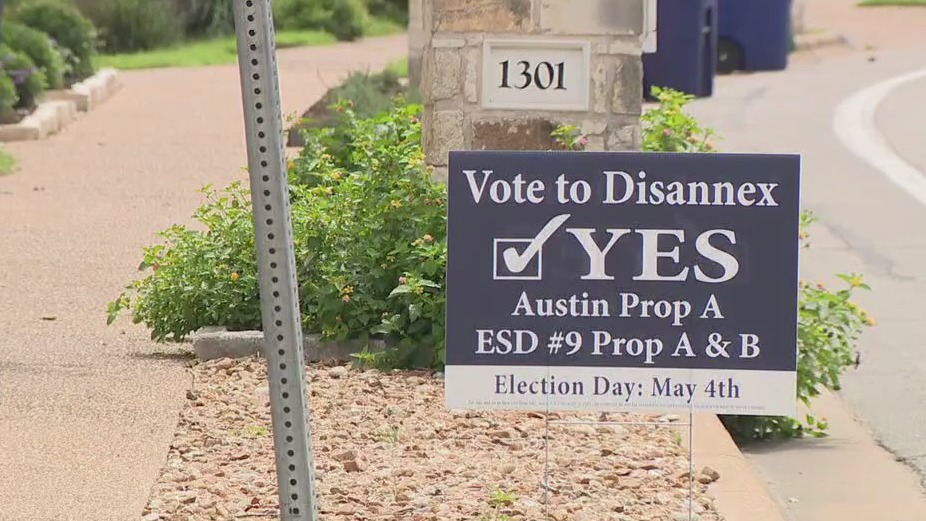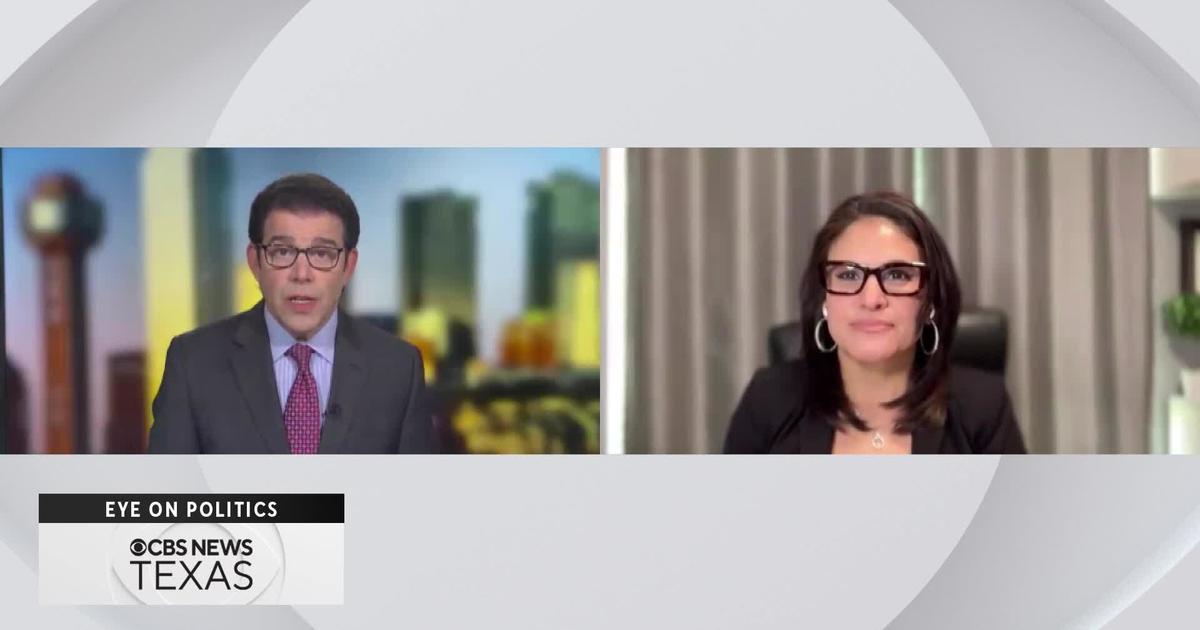The sustainable sequins can be used in different elements of fashion design.
Image Courtesy University of Texas at Austin

Instead of having material researchers just holed up in labs tinkering with new theories and concepts, the University of Texas at Austin enlisted some of them to join forces with other faculty, students and alumni in the school’s division of textiles and apparel.
Together they combined research expertise and fashion design knowledge to demonstrate how newly developed sustainable sequins can be used in a variety of ways. Now visitors to the Texas Science & Natural History Museum on UT Austin’s campus can see their creations in “Particles of Color: Where Science Meets Fashion,” which runs through the summer of 2025.
“Particles of Color: Where Science Meets Fashion,” explores the use of compostable, plant-based and biodegradable materials in clothing, accessories, jewelry and art. The 50 glittering objects on display were made with polylactic acid, a compostable material, that has been combined with natural and nontoxic dyes to create colorful, stylish clothes, jewelry and art. Made from agricultural waste, polylactic acid is easy to work with since it does not dissolve in water, but it will break down if composted, said Jessica Ciarla, a faculty member in the Division of Textiles and Apparel who is behind the exhibition.
“Polylactic acid is a bioplastic that has been tested and developed for other fields and is part of a growing global market, so it is a real contender in the space,” Ciarla said. “It can also be melted down and reused so it makes it an ideal choice for zero-waste production.”
For added eco-friendliness, the team used non-toxic colorants such as algae, natural dyes, spices and food waste to create an organic color spectrum. “Approaching this research from an interdisciplinary perspective by synthesizing science, design and engineering has allowed us to see what the future of the fashion industry can entail from a collaborative perspective,” she said.
Museum goers are more accustomed to checking out the prehistoric dinosaur fossils in the galleries, but this new direction is meant to lead them to a vision of a cleaner, brighter future for the fashion industry. Science and fashion is an enticing combination, as more companies, consumers and organizations are increasingly considering how their actions and purchases play into environmental waste and impact the planet.
The impetus for this is to show the public what is developed in the lab in order to engage with the community and the fashion industry about the synthesis of science and fashion, according to Ciarla.
“Sustainability is no longer about what we need to do in the future, it is about what we can do now. We need to move the industry from using petroleum-based plastics to better options,” she said. “There are valuable resources typically viewed as trash such as agriculture waste that can be used to create plant-based plastics that provide cleaner options.”
How each of the designers featured the sustainable sequins in their work that is on display in “Particles of Color” reflects its multiple potential applications.
The sustainable sequins can be used in different elements of fashion design.
Image Courtesy University of Texas at Austin
Ciarla is also previewing a prototype of a non-woven textile she created using denim and paperboard made from cereal boxes to develop a fabric that could be used for handbags. Visitors can check out the first experimental prototype of this textile in a digitally printed fabric that Ciarla made into mini handbags with floral sequins attached. She explained, “Showing how other materials derived from waste can work together is a look towards our future research and how we intend to expand our material development to other segments of the textile and material supply industry.”
“Particles of Color” also provides a commentary for the fashion industry’s contribution to plastics pollution. Of the 100 billion items of clothing that are produced each year, 70 percent of them are made of plastic, according to the Plastic Pollution Coalition. Creating all those synthetic materials for polyester, nylon and acrylics annually involves using what amounts to the equivalent of 300 million bathtubs filled with petroleum. Ciarla said, “We wanted to show that there is a way to create something better with the materials we have right now.”
Developing a commercial prototype is in the works, and the exhibit’s industry partners have highlighted a few of the diverse applications. Designers like Diana Broussard of New York City and Nikolaj Storm of Copenhagen incorporated the sustainable material into their respective garments and accessories that are on display. As is often the case, when it comes to materializing concepts into production, the next step is to generate funding so that Ciarla and her team can expand product offerings and work with manufacturing facilities, who can “help us scale up while integrating our core beliefs of building a sustainable business model,” she said.
The museum’s director Carolyn Connerat said that visitors “can explore how research happening right here on the UT Austin campus can make an impact on the natural world by creating compostable materials used in clothing we all can wear.”

The University of Texas at Austin is highlighting the work of researchers in fashion design.
Photo by Nolan Zunk/Courtesy the University of Texas at Austin
UT’s research into sustainable sequins started five years ago, when a President’s Award for Global Learning was presented to Ciarla; Nathaniel Lynd, an associate professor in the McKetta department of chemical engineering, and Luisa Gil Fandino, an associate professor of textiles and apparel.
The show highlights how UT researchers adapted the material for use in fashion, and there are fashion examples created by designers from Austin and New York.
The installation is the first new exhibition at Texas Science & Natural History Museum since it reopened in September 2023 after an 18-month closure and extensive renovation. The fourth floor of the museum has been designated the Science Frontiers Gallery and is designed to house exhibits on advanced scientific research and demonstrate how scientific discovery can help address current issues and concerns.


(The Center Square) – Over the last few days, city and county officials are responding to what appears to be “the largest opioid overdose outbreak” in Austin and Travis County, Travis County Judge Andy Brown said at a news conference.
Austin Police Department Assistant Chief Eric Fitzgerald said police officers and emergency personnel reduced an untold number of deaths, saying, “there is a deadly batch of illicit narcotics in our community. Our intent … is to find those persons responsible and hold them accountable.”
Lt. Patrick Eastlick with the APD’s narcotics unit said two persons of interest were detained and one was arrested for felony possession of a firearm. An investigation is ongoing into the source of where the drugs came from. “Anyone found responsible for distributing the suspected fentanyl faces potential charges of murder or manufactured delivery of controlled substance causing death or serious bodily injury,” he said.
Last year, the Texas legislature passed a bill that Gov. Greg Abbott signed into law changing state law to classify fentanyl poisoning as murder, require death certificates to state cause of death related to fentanyl poisonings, expand distribution of Narcan, among other measures.
So far, the APD has filed five charges related to fentanyl overdose deaths, Eastlick said.
Austin-Travis County EMS Assistant Chief Steve White said emergency personnel initially responded to calls in the downtown area Monday morning, which later spread throughout the city. Emergency teams were deployed to quickly distribute Narcan rescue kits.
Within a 24-hour period, they responded to over 51 suspected overdoses with many individuals in cardiac arrest. Four people were first reported dead.
“We have not experienced overdoses of this volume since 2015, when K2 struck our community,” White said, referring to synthetic marijuana. EMS usually gets an average of two to three calls a day, but responded to over 50 calls after the outbreak began, “well over a thousand percent increase.”
In a separate press announcement, Dr. Angela Carr with Travis County EMS said as of 6 pm on Thursday, Austin Travis County EMS had responded to 75 suspected overdoses. So far, more than 400 doses of Narcan have been distributed to affected areas.
Brown said they had to wait until the toxicology reports were completed but they were investigating “eight deaths as suspicious.”
The current death total is nine, according to a county spokesperson. “Preliminary toxicology reports indicated the presence of fentanyl in nine cases, cocaine in eight and methamphetamine in three, the American-Statesman reported.
Brown said emergency personnel saved dozens of lives by administering Narcan, a drug that reverses opioid overdoses if administered quickly enough. Information about where Texans can obtain Narcan can be found here and at Txcope.org.
“Drug overdose deaths continue to be the number one cause of non-accidental deaths in Travis County,” Brown said. In 2022, Travis County commissioners declared the county’s overdose epidemic as a public health crisis.
In March, White spoke at an Austin City Council meeting on public safety saying, “Travis County now has twice as many opiate overdose deaths than any other county in Texas, per capita.” He explained the scope of the “severe increase” in opioid overdoses, saying they averaged roughly 100 a month at the time.
Last year, while the legislature was in session, Texas Department of Public Safety troopers seized half a million lethal doses of fentanyl in Austin, The Center Square reported. They also seized other narcotics, weapons, ammunition, and several stolen vehicles in a bust that was part of a DPS Austin Violent Crimes Task Force operation assisting the APD.
Violent crime and fentanyl overdoses have increased in the state capital since the Austin City Council voted to defund the APD in 2020. Efforts by voters to increase APD funding and reverse the city council’s actions failed in 2021. After losing a significant number of APD’s force, the number of homicides in Austin spiked, APD was no longer able to respond quickly to 911 calls, street takeovers got out of control, a machete crime spree ensued among other violent crimes being reported.
CLICK HERE TO READ MORE FROM THE WASHINGTON EXAMINER
In response, Gov. Abbott took action, creating task forces and surging additional resources, including directing DPS troopers to provide long-term assistance to APD. He also worked with the Texas legislature to implement measures to prevent municipalities from defunding the police in the future, The Center Square reported.
“Overdose deaths are completely preventable and everyone in Travis County should be aware and prepared to respond to an overdose incident,” Brown said. “Everyone should carry Narcan and know how to respond to an overdose. I carry a dose of it in my computer bag.”

Residents of certain outlying area of Austin voted on one of six propositions to decide if their neighborhood should be removed from city limits.
AUSTIN, Texas – “Vote Here” signs are spread across the city of Austin at dozens of polling centers.
Inside, multiple candidates and propositions are on the ballot for voters to choose from.
There are six “dis-annexation” propositions, allowing residents of several outlying areas to vote on whether to remove themselves from Austin city limits.
The major selling point for these propositions is that they will lower property taxes.
“Oh, I’m for sure voting against,” said Malone resident Dave Kemper.
“We voted yes for the dis-annexation, mainly because we want to see the property taxes go down,” said Lost Creek resident Joe Wempe.
Runoff elections are fast approaching in the Lone Star State. James Hinson of UT’s Texas Politics Project joins FOX 7’s Rudy Koski to discuss.
The city would phase out property taxes once a neighborhood’s debt is paid.
Residents would still pay school property taxes.
The ballot measures were prompted by legislation passed in the Texas legislature in 2023.
Each of the neighborhoods was brought into the city boundary about 10 years ago.
“We are our own little community, and I think that’s how we should be treated,” said Lost Creek resident, Rachel Cole.
Austin Police and Fire Departments would no longer serve “dis-annexed” neighborhoods.
Instead, Travis County would handle law enforcement and fire response. Some services would discontinue,like trash from Austin resource recovery.
“I mean, not to disparage the county, but it’s not broken. So why would we fix it? Like, the city has done a great job with our trash,” Kemper said.
The possibility of dis-annexation comes with concerns surrounding emergency services for some residents.
“As a mom of three kids, I want the best emergency response that I can get. So, if I call 911, I want a quick response,” said Cole.
Others welcome the thought of a possible change.
“Maybe we have better police control here, because we have seen more crime in the area,” said Lost Creek resident Donna Wempe.
The residents were able to take their decision to the polls, with the final votes cast on Saturday.

Watch CBS News
Be the first to know
Get browser notifications for breaking news, live events, and exclusive reporting.


EU Parliament leaders recall term's highs and lows at last sitting


GOP lawmakers demand major donors pull funding from Columbia over 'antisemitic incidents'


Hamas ‘serious’ about captives’ release but not without Gaza ceasefire


How to buy JC Latham’s Tennessee Titans jersey after 2024 NFL Draft selection


Both sides prepare as Florida's six-week abortion ban is set to take effect Wednesday


Columbia University’s policy-making senate votes for resolution calling to investigate school’s leadership


Michigan State football adds DT Brandon Lane from Stephen F. Austin


House Republicans brace for spring legislative sprint with one less GOP vote